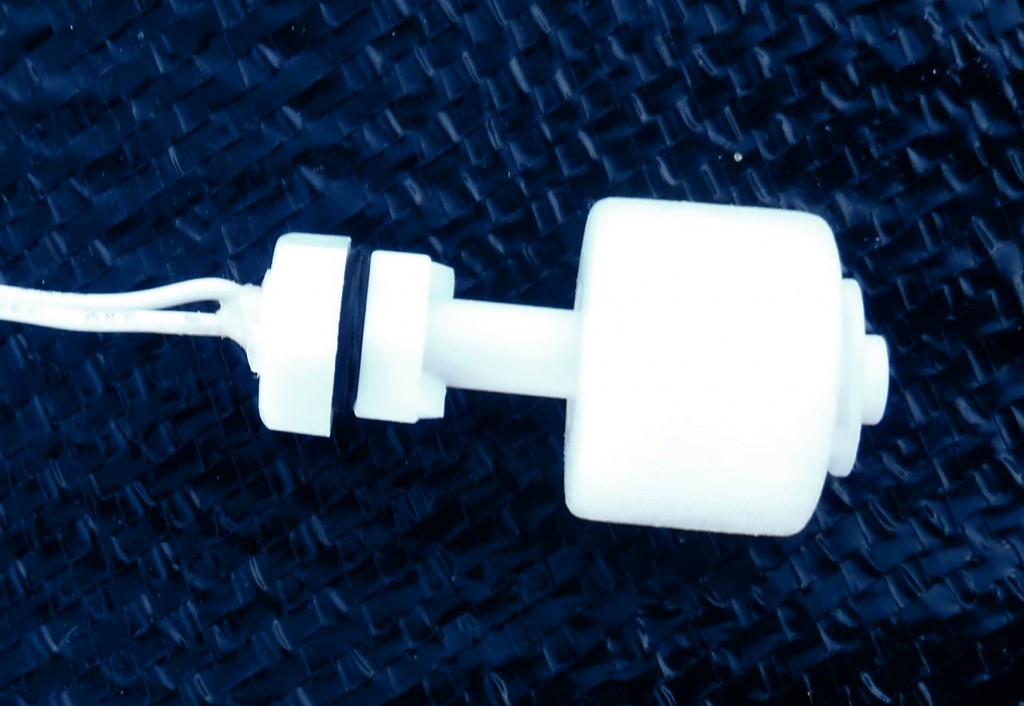The rain tank had a submerged pump lowered down into the water and connected to the pipe that goes up to the header tank. It was tested and a gush of water duly occurred!
The total head difference between the level in the underground rain tank and the level of the input pipe in the header tank up on the roof is about 5metres (16feet) and the flow rate was quite respectable.
Also a level detector was designed and built using 7 little float switches separated by 150mm (6inches). This will go down into the rain tank so we can keep an eye on the level of the water, recording how much rain we have collected and knowing when the tank is empty so that the pump doesn’t run dry.
There is a similar level detector on the header tank as well but this time there is only 2 float switches, set 100mm (4inches) apart so we can control when to start filling the header tank up using the water from the rain tank and when to stop filling!!
In situations where we have run out of rain water then the old fashioned cistern ball valve will keep the header tank topped up with mains water, but at a reduced level.
We have been putting insulation panels in and around the tank and the pipes to protect them from frost. We used 50mm (2inches) of PU foam so it should survive the Winter months.
The last job to do on the header tank is to wrap the final structure in rain proof material.
